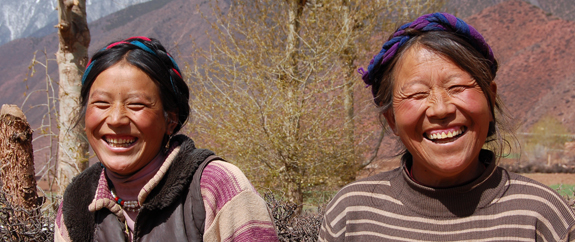
Twenty years ago, the fourth world conference on women hosted in Beijing broke all the records – more than 47,000 participants from around the world and 189 governments crafted by consensus a defining, unapologetic platform for action. The visionary global blueprint for gender equality was based on a simple premise – as powerfully proclaimed by then First Lady Hillary Clinton representing the United States at the conference – that women’s rights are human rights, and human rights are women’s rights.
The watershed, visionary roadmap continues to guide national, regional, and global commitments. Governments gathered in Beijing in 1995 solemnly recognized gender inequality as a driver and entrencher of poverty. Women’s access, control, and decision-making over land appeared in a quarter of the 12 critical areas of concern for women, namely poverty, economy, and the environment.
In the Beijing Declaration and Platform for Action, governments from every continent etched their multilateral determination to “ensure women’s equal access to economic resources, including land…as a means to further the advancement and empowerment of women and girls.” They acknowledged that “women’s poverty is directly related to the absence of economic opportunities and autonomy, lack of access to economic resources, including … land ownership and inheritance.”
Though women perform nearly half of the agricultural labor in the developing world, they often lack secure rights to the land they farm. Women in many of the poorest regions of the world are denied equal rights to access, use, inherit, and control land. In response, governments agreed to remove legal and customary obstacles and cement in law women’s equal rights to access and control land and other productive resources.
In line with women’s lived experiences, the Beijing platform asserted that “women contribute to development not only through remunerated work but also through a great deal of unremunerated work.” While women toil in agriculture, grow food, and produce goods and services, they still “also perform the great majority of unremunerated domestic work and community work, such as caring for children and older persons, preparing food for the family, protecting the environment and providing voluntary assistance to vulnerable and disadvantaged individuals and groups.” Leaders agreed that when such work is undervalued and under-recorded, women’s contribution to development is seriously underestimated, its social recognition is limited, and policies fail to contribute to a better sharing of responsibilities.
Acknowledging the importance of women’s input to conserving land and environmental stewardship, the governments present agreed to “integrate women, including indigenous women, their perspectives and knowledge, on an equal basis with men, in decision-making regarding… policies and programmes for sustainable development, including in particular those designed to address and prevent environmental degradation of the land.”
Today we know with even greater certitude that with secure tenure rights, women’s status rises and the wellbeing of families improves (see this infographic for data points). Moreover, robust research links strengthening women’s land rights and productive assets to powerful ripple effects ranging from enhanced health outcomes and access to services, to educational gains, and reduced rates of domestic violence.
And while progress is visible – the comprehensive Beijing Platform for Action remains a viable, vibrant, relevant directive for imagining a world of genuine equality, opportunity, and sustainable progress.
In China – the host of the seminal world conference on women and where women make up the bulk of the rural labor force – just last year, the central government for the first time highlighted the importance of effectively safeguarding women’s rights to land. This year’s new Rural Land Registration Guidelines explicitly require women’s names to be included on household land certificates to reflect equal land rights for men and women.
Yet dozens of countries still lack laws to uphold girls’ and women’s rights to inherit, access, manage, or control land and property, and many more fail to apply or enforce existing protections.
Progressive reforms will be accelerated by the Sustainable Development Goals (SDGs) set to be approved by the international community later this month. The 17 proposed sustainable development goals, which are a framework for addressing a broad range of development goals to replace the expiring Millennium Development Goals, emphasize an end to poverty and stepping up gender equality – both served by ensuring women have secure rights to land and resources.
Leveraging decades of extensive expertise, a broad coalition of global and national organizations, including Landesa, is advocating for a land rights indicator that will capture progress on stronger land rights for women as critical to this updated global development agenda. Standing on the shoulders of the Beijing conference feminists, such indicators will begin to measure how far we’ve come and point to how much farther we still can and should go.
